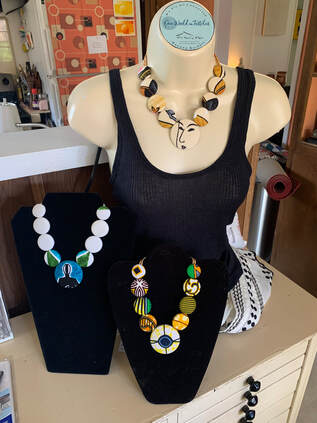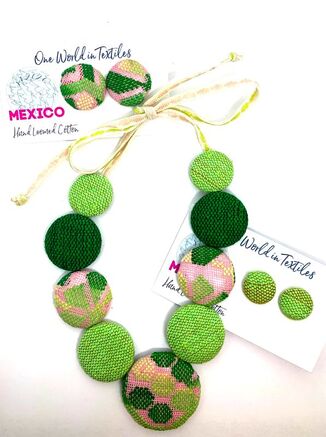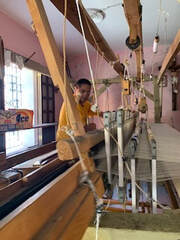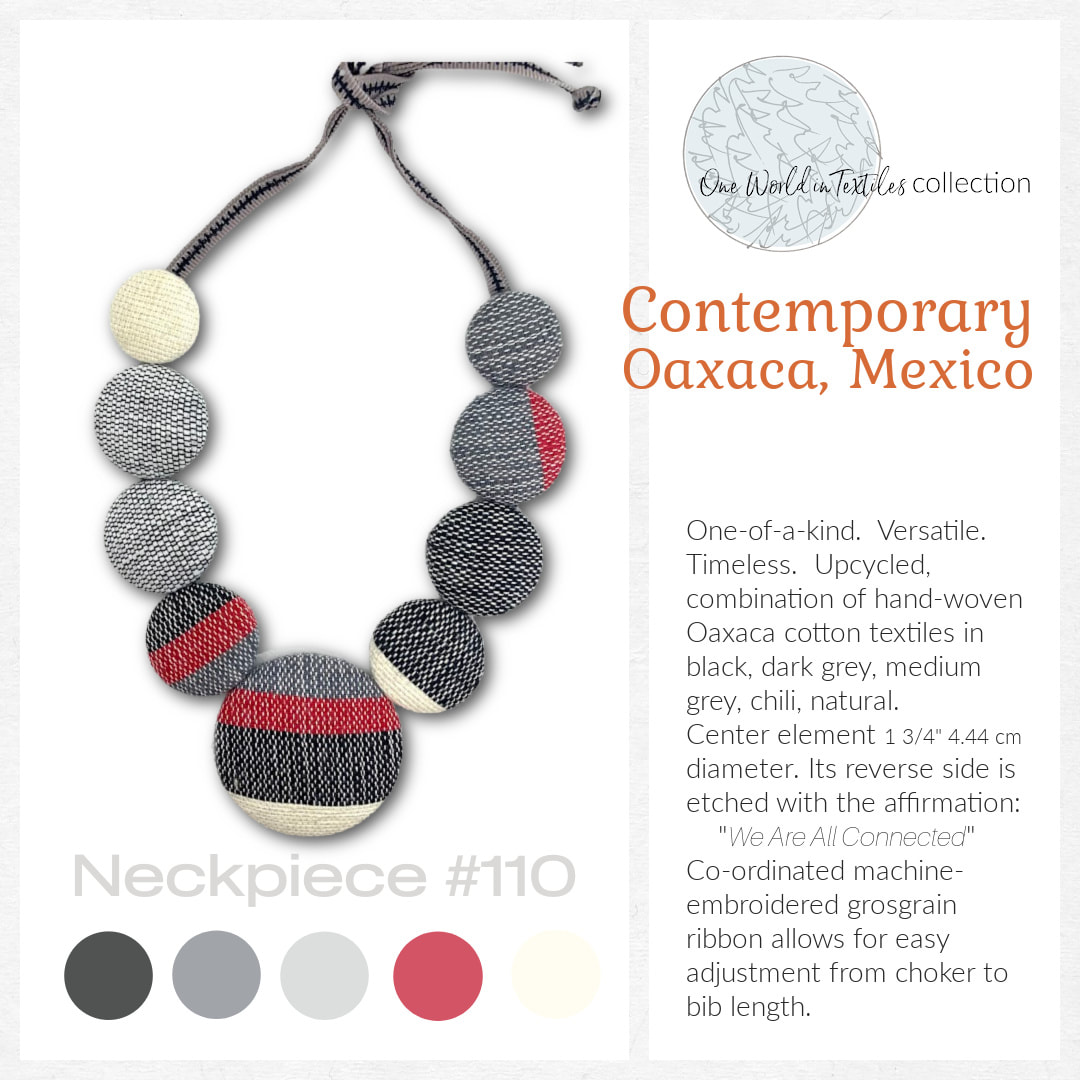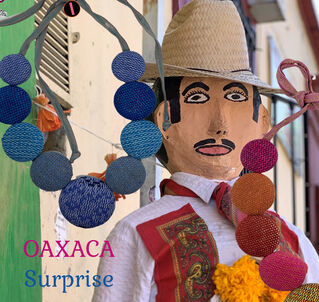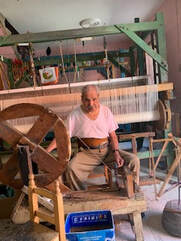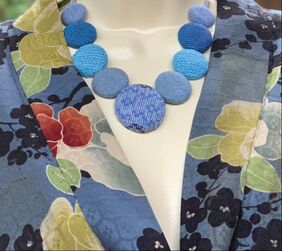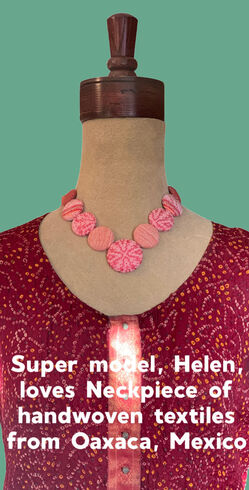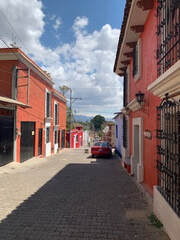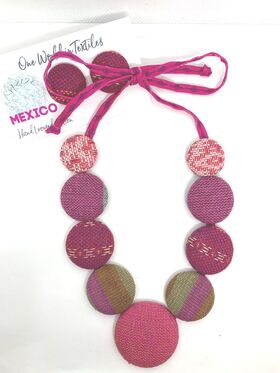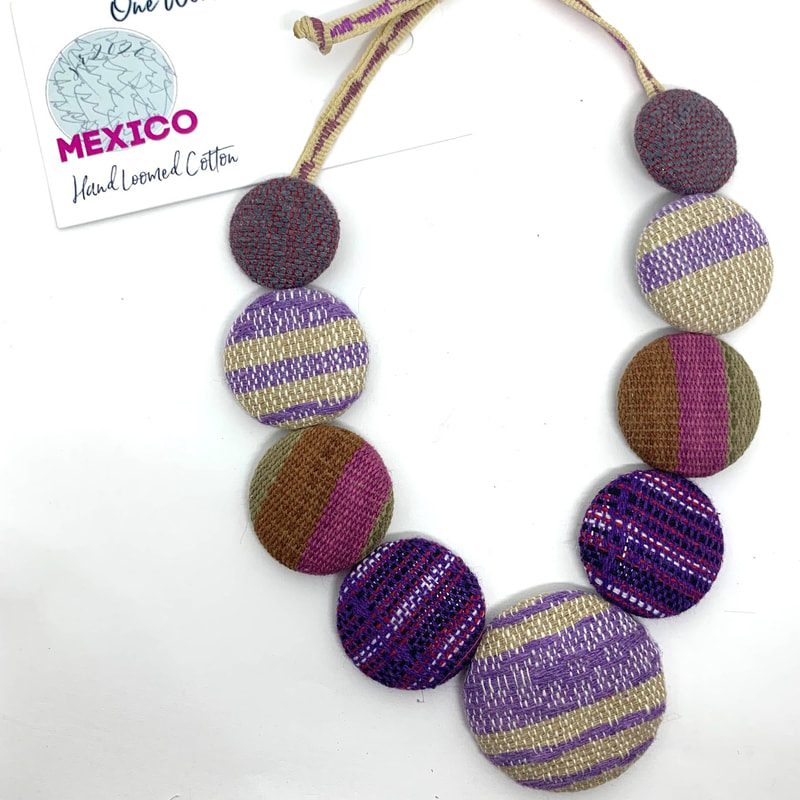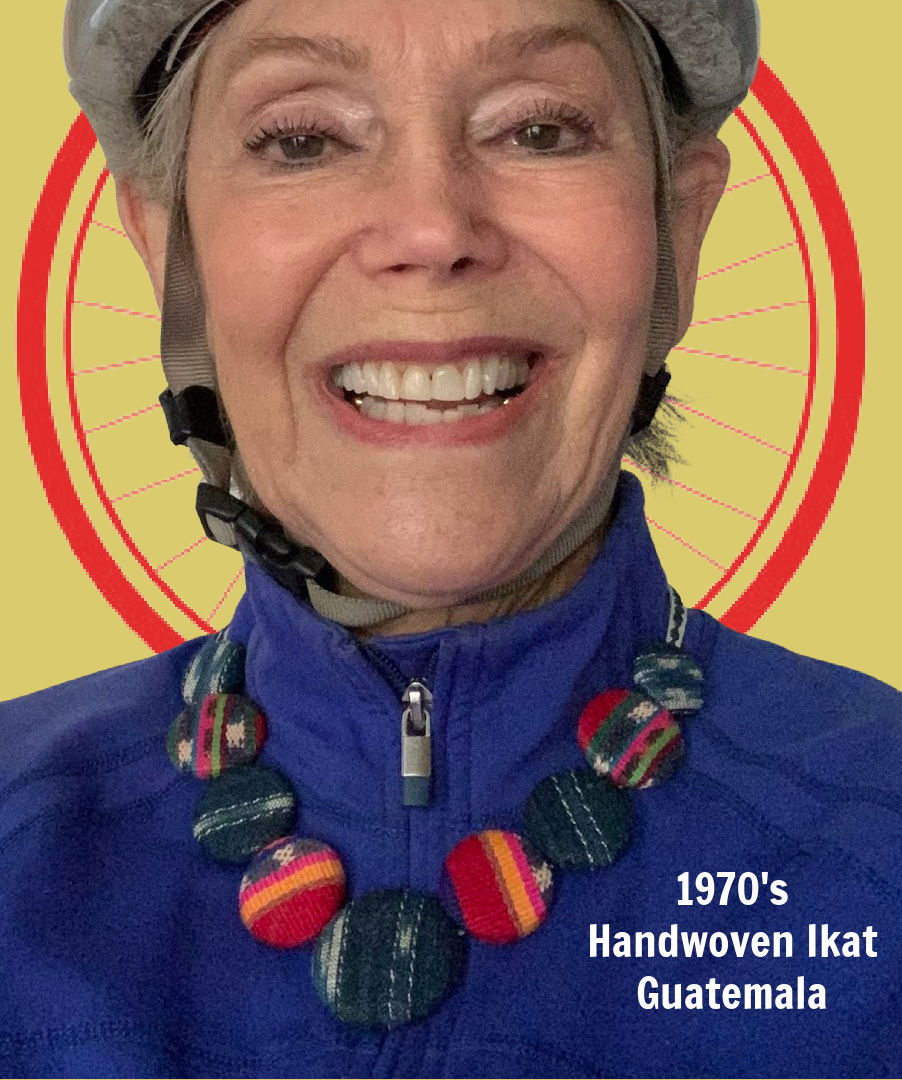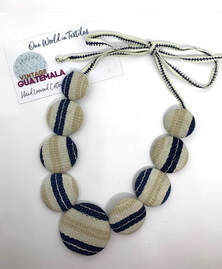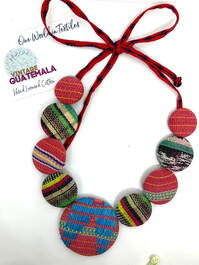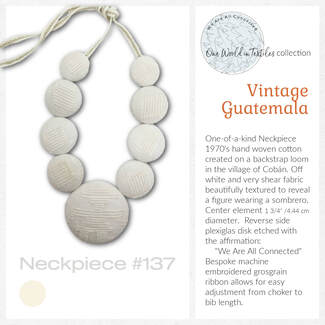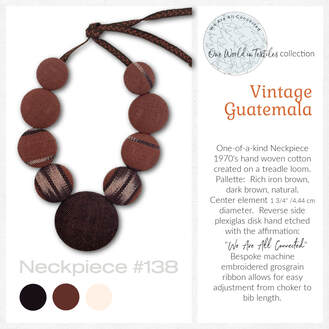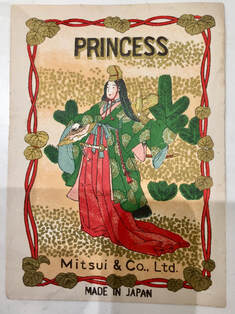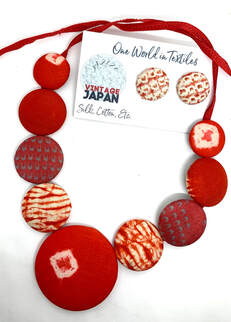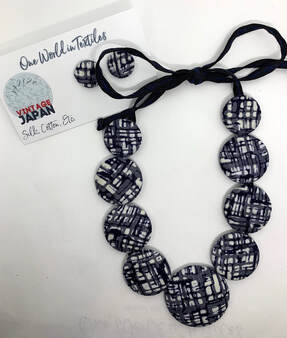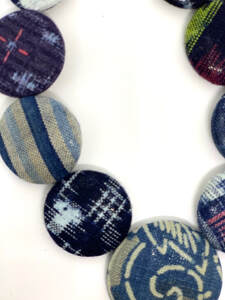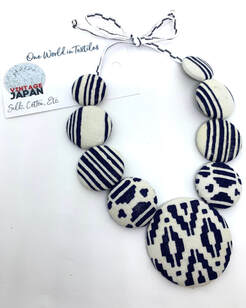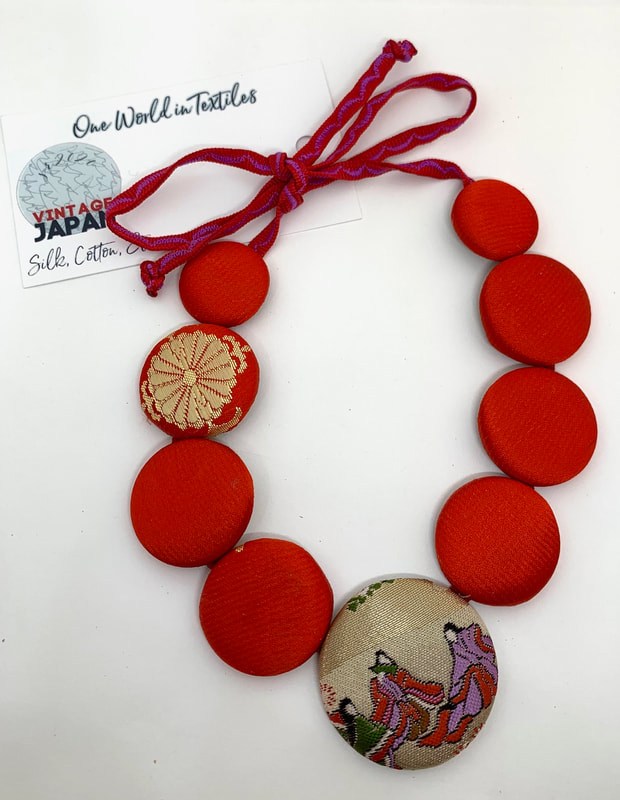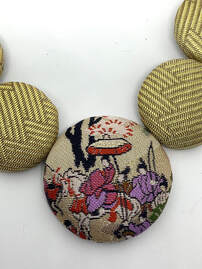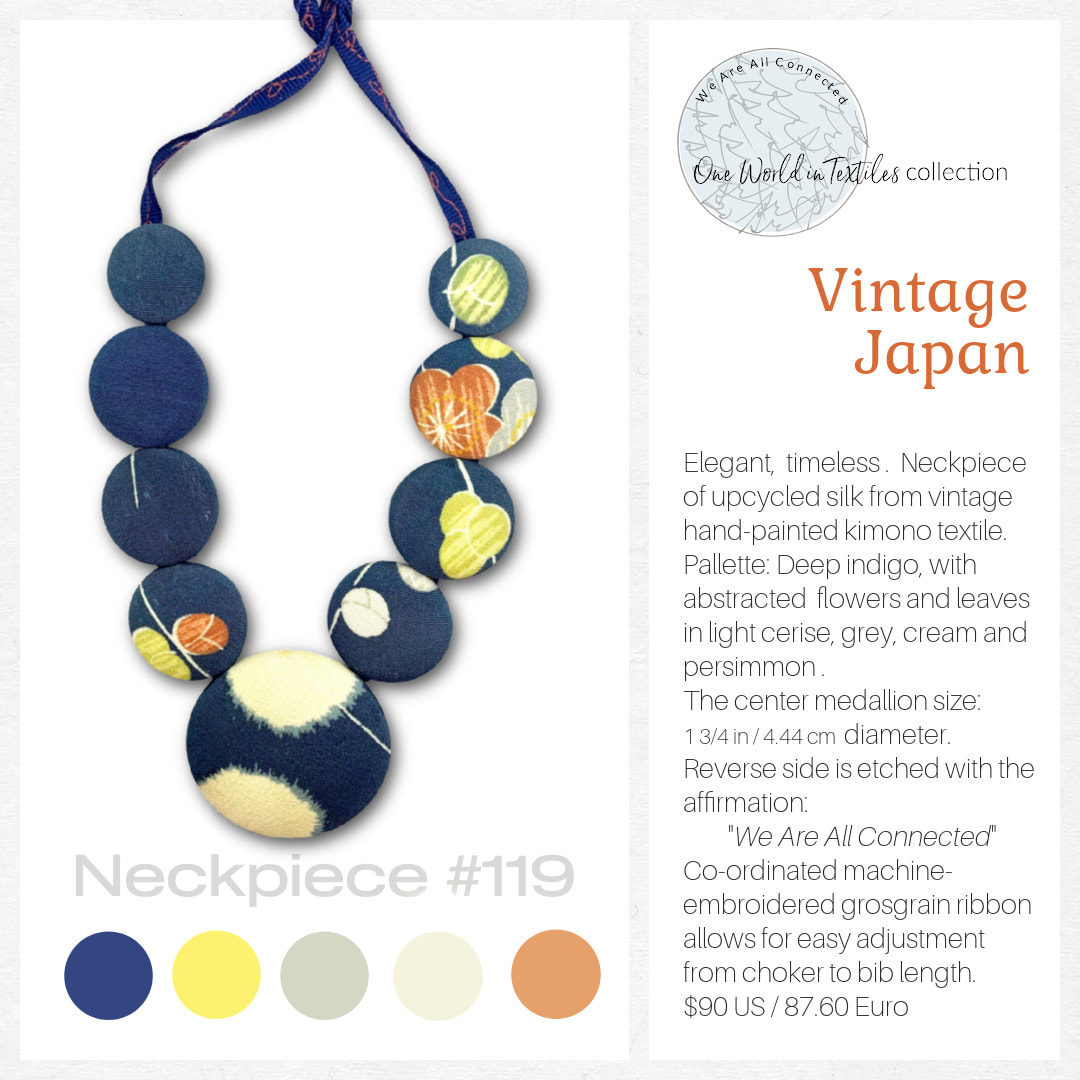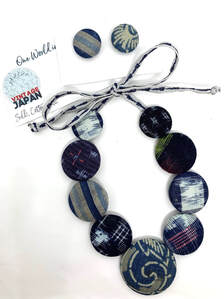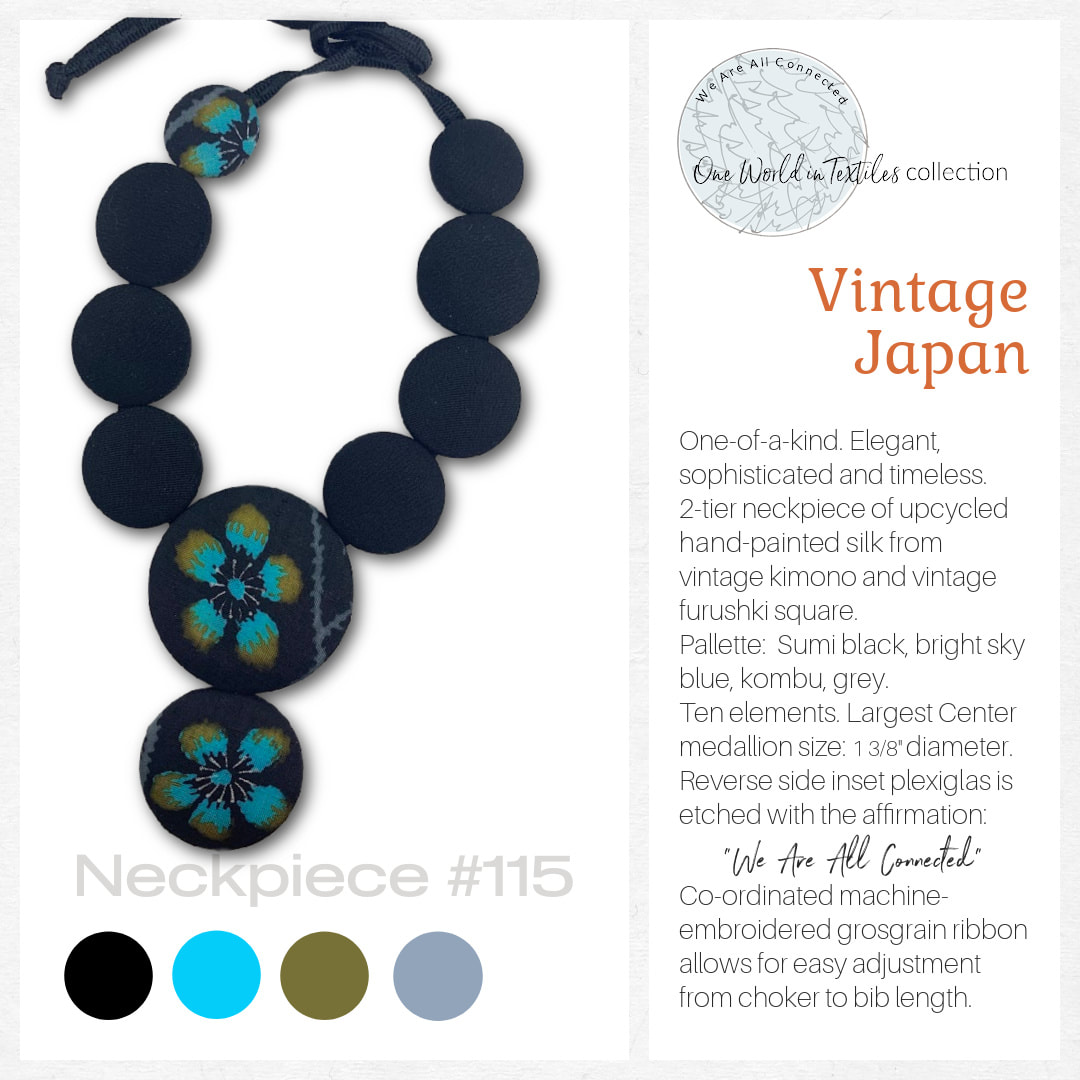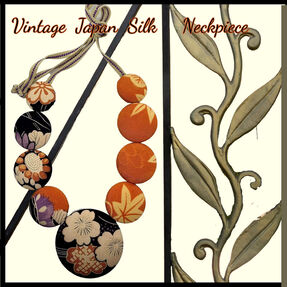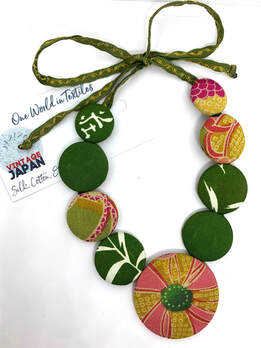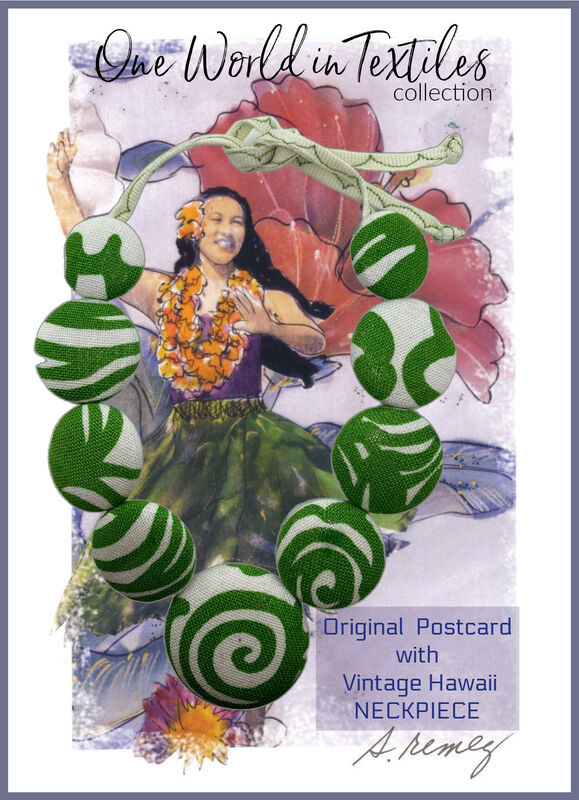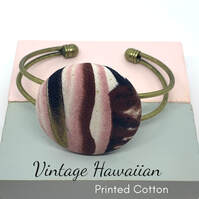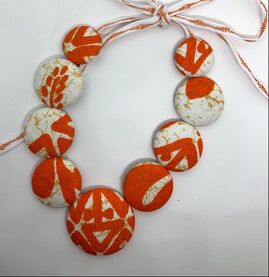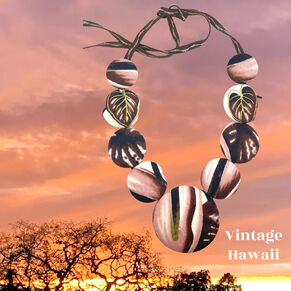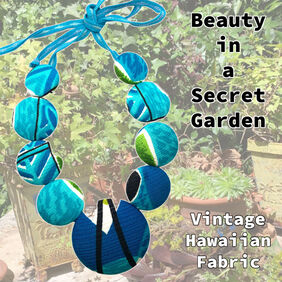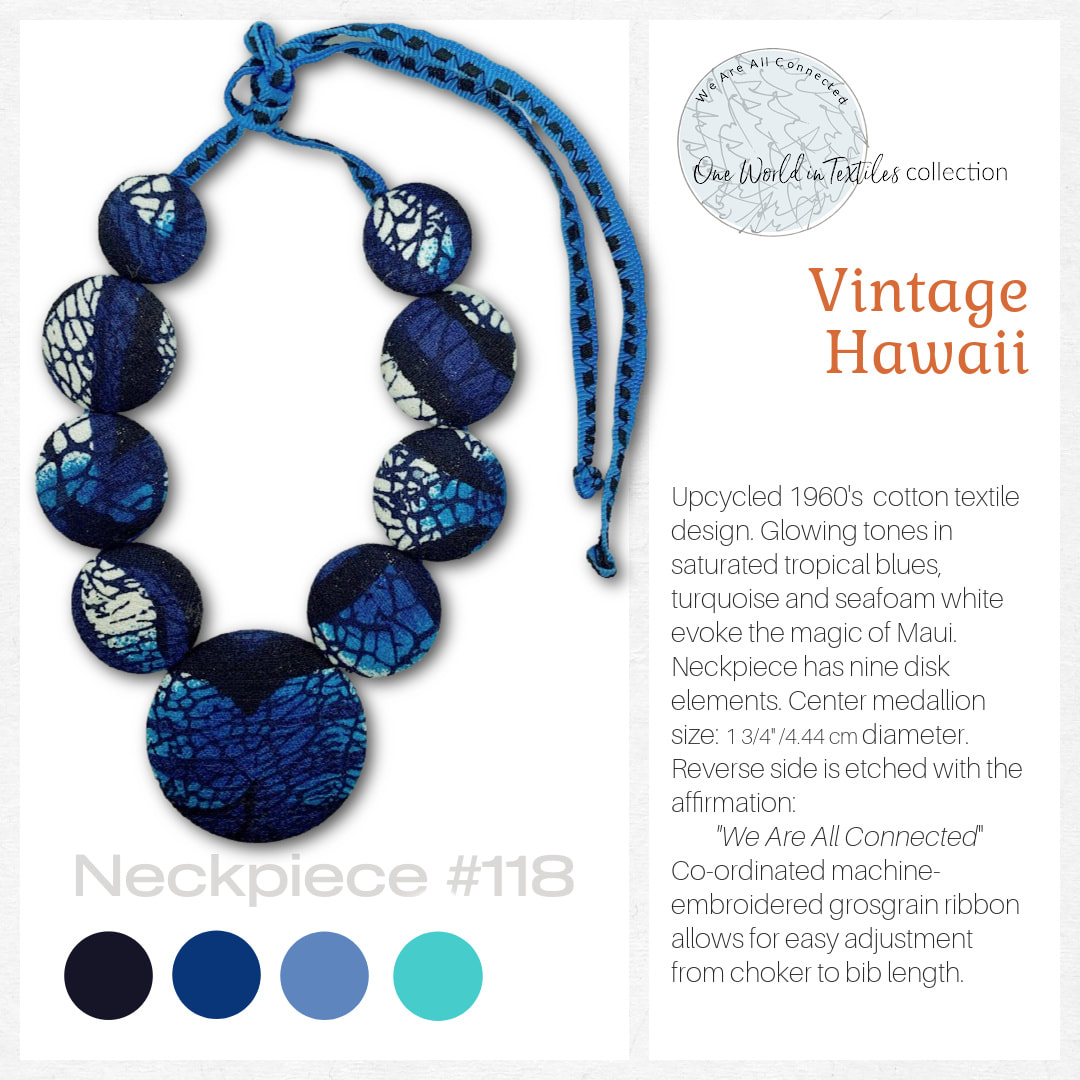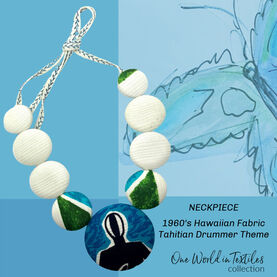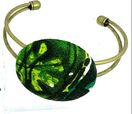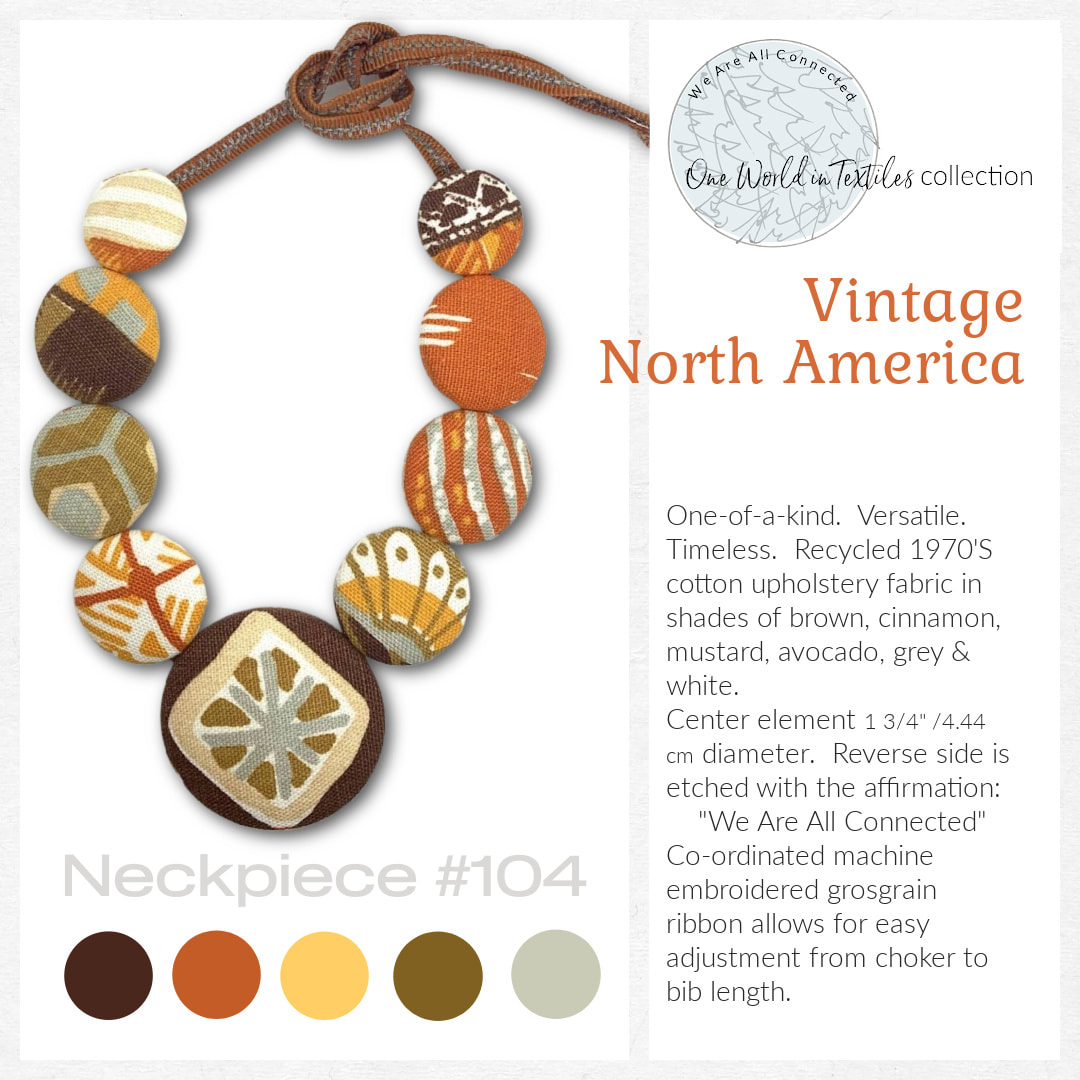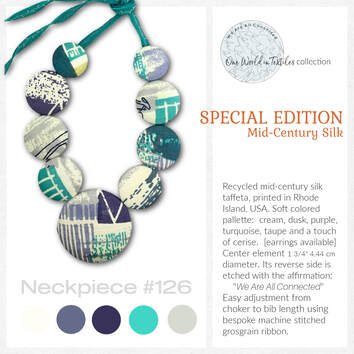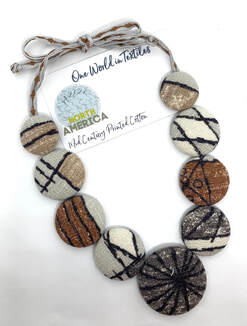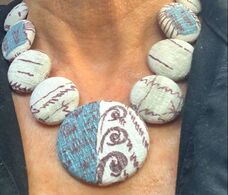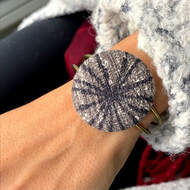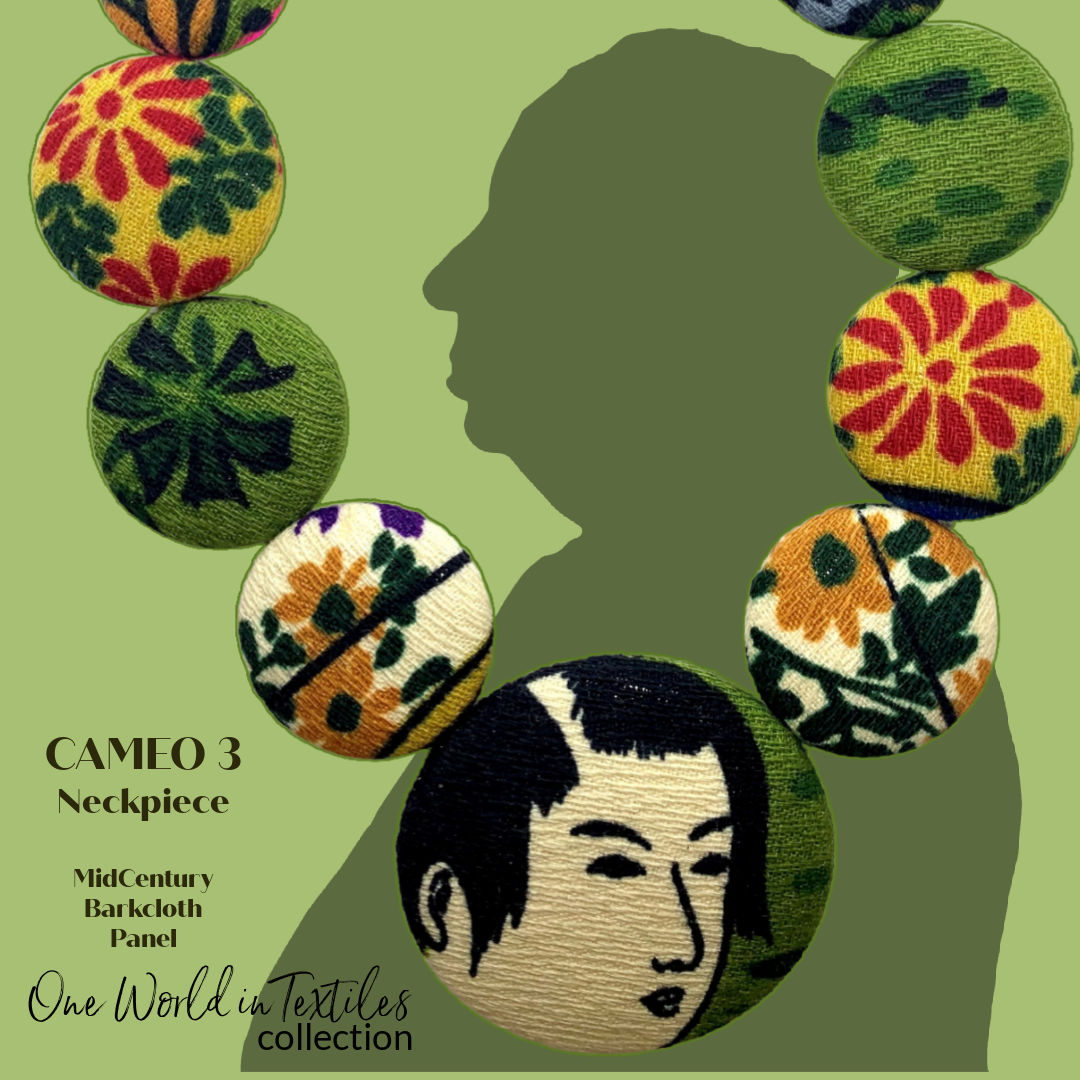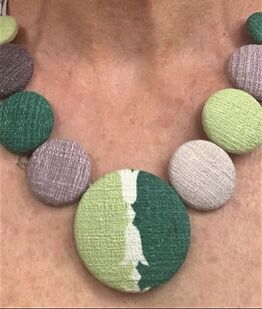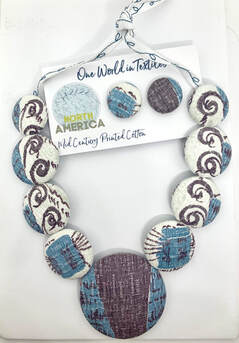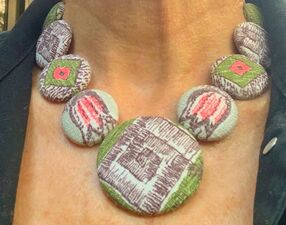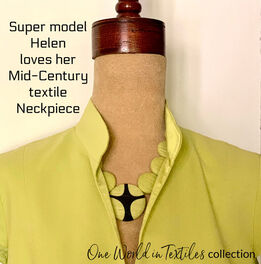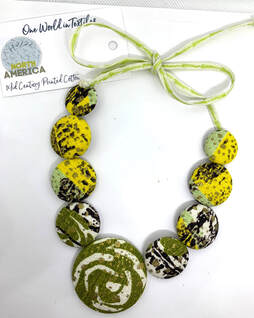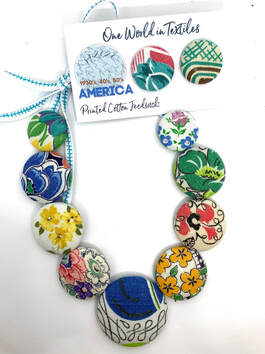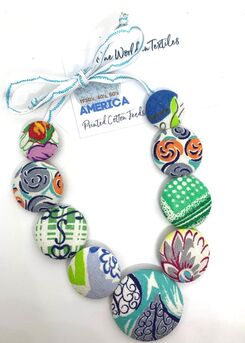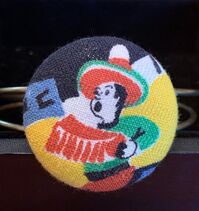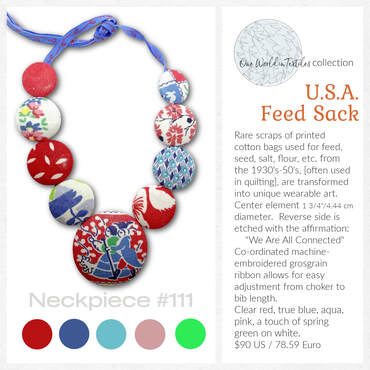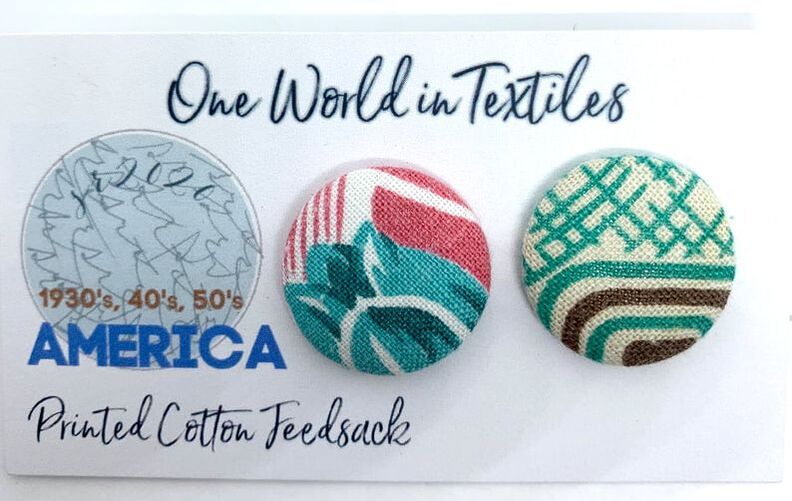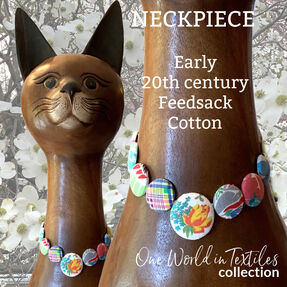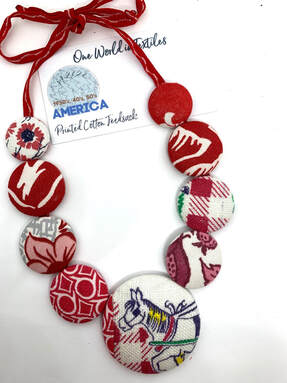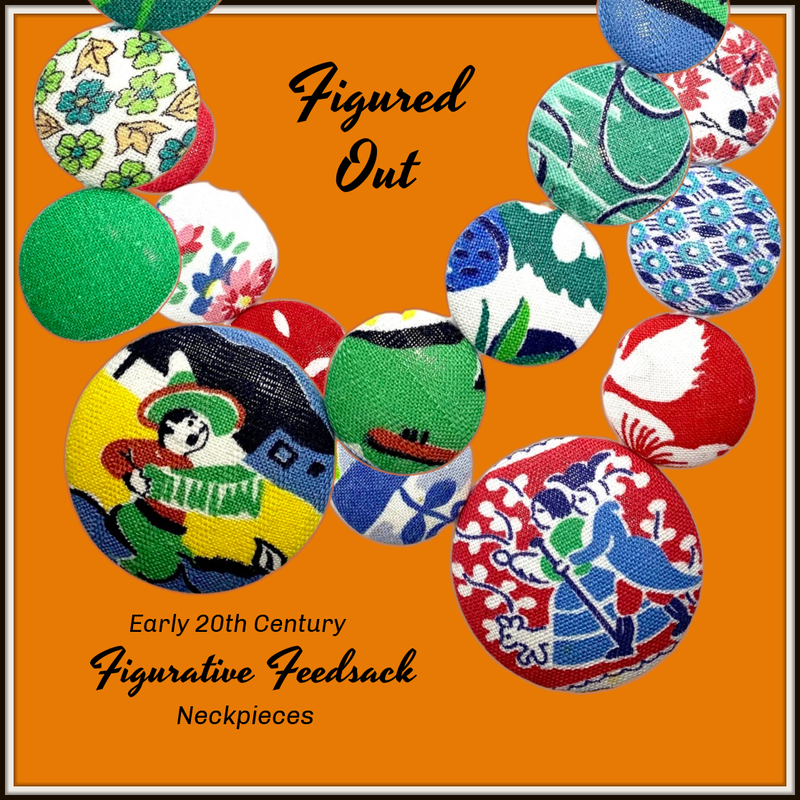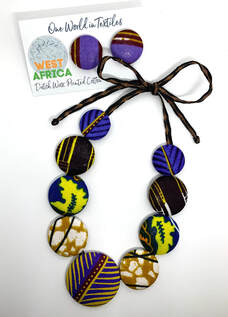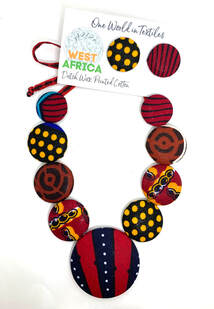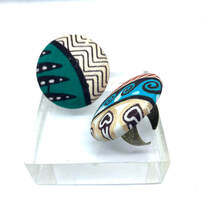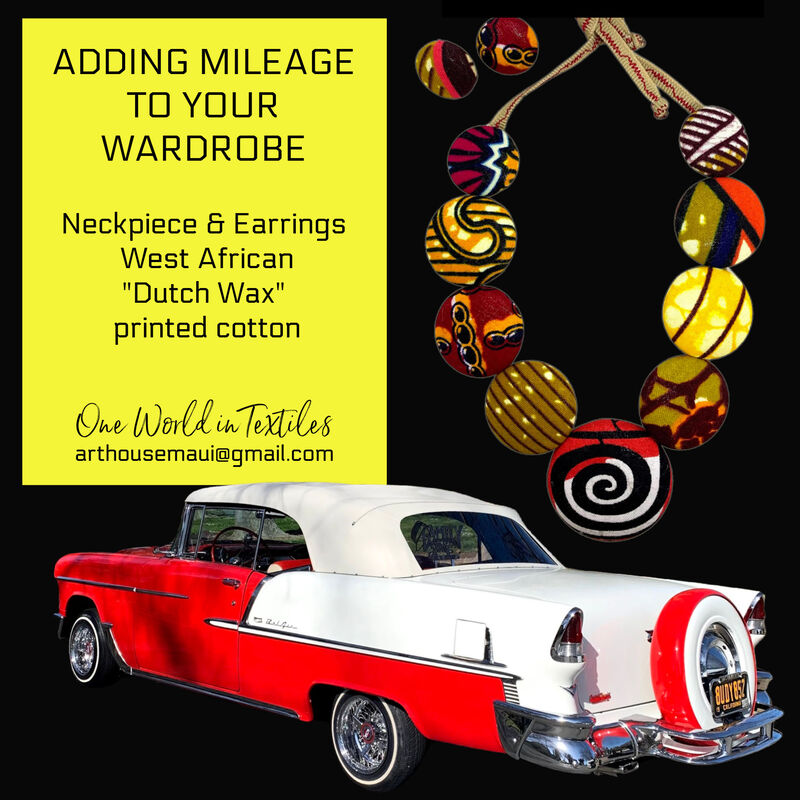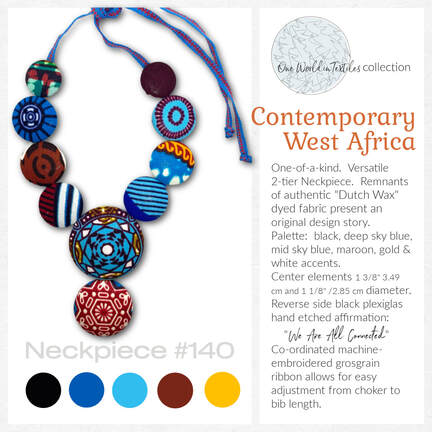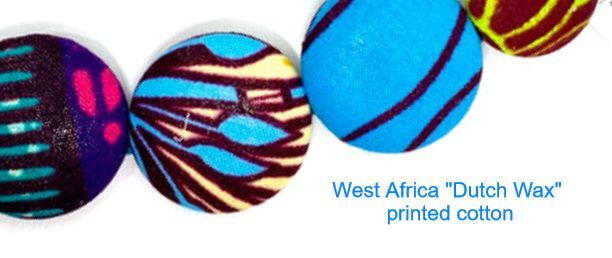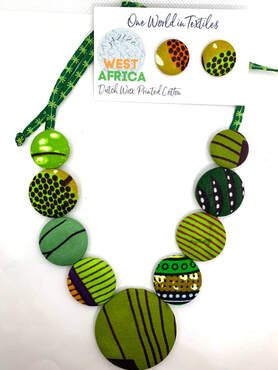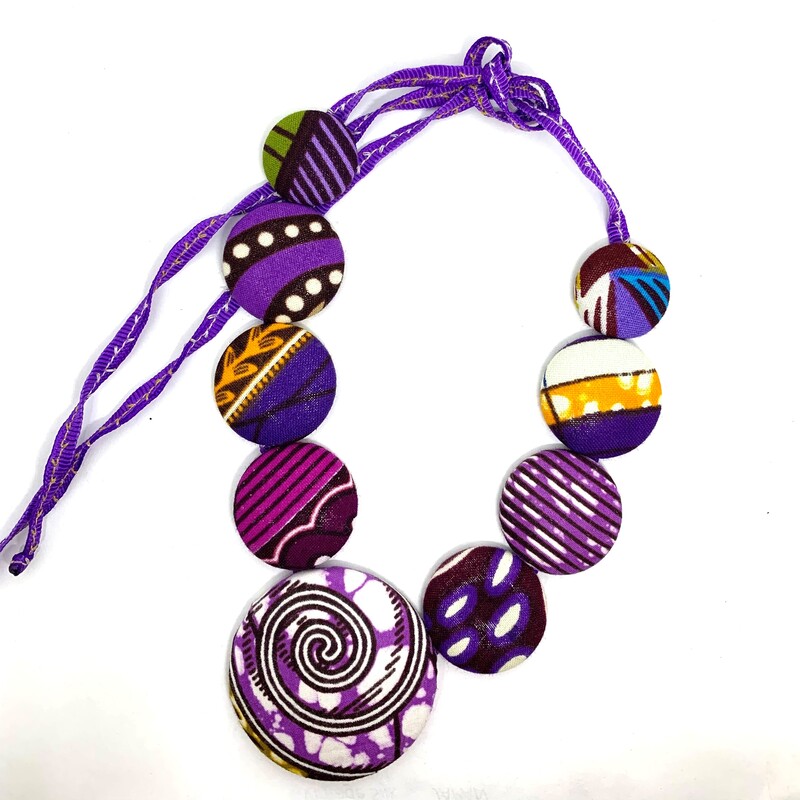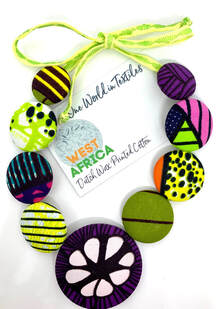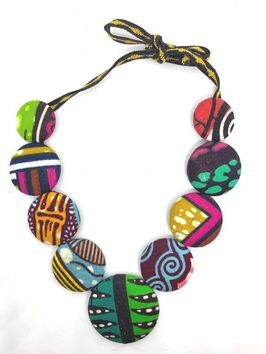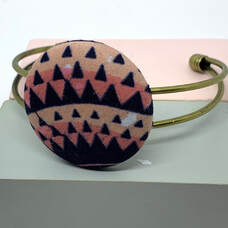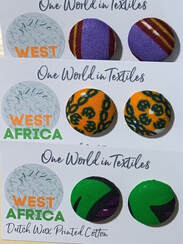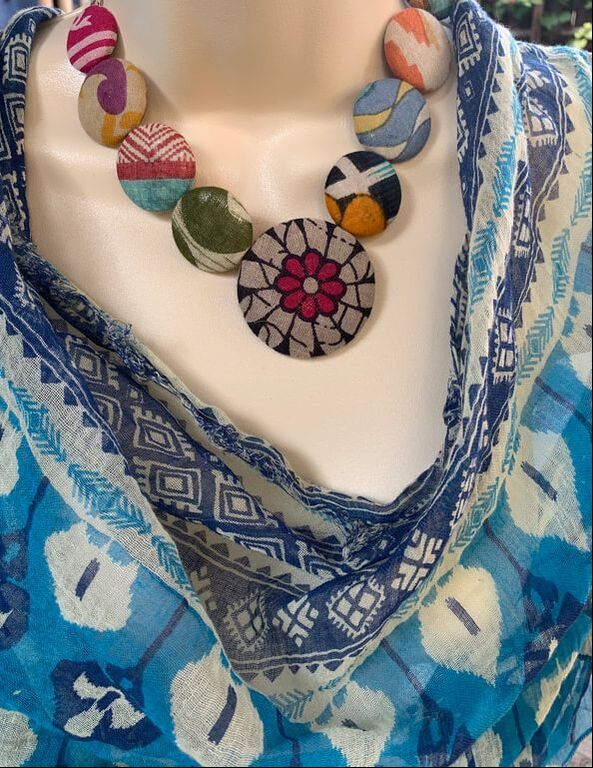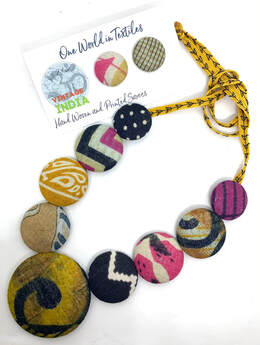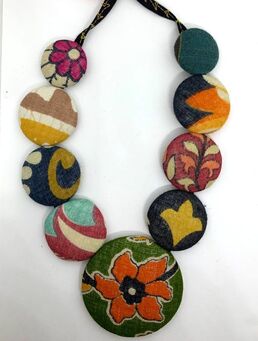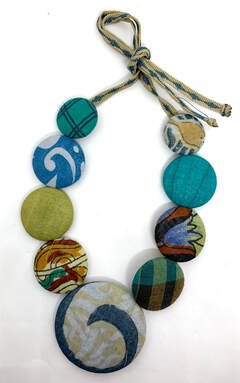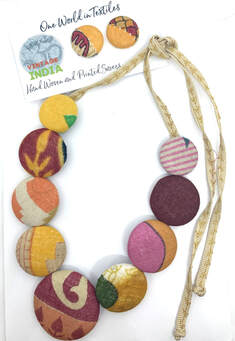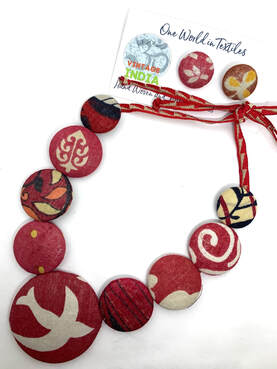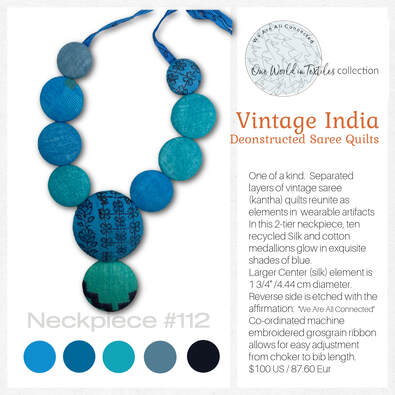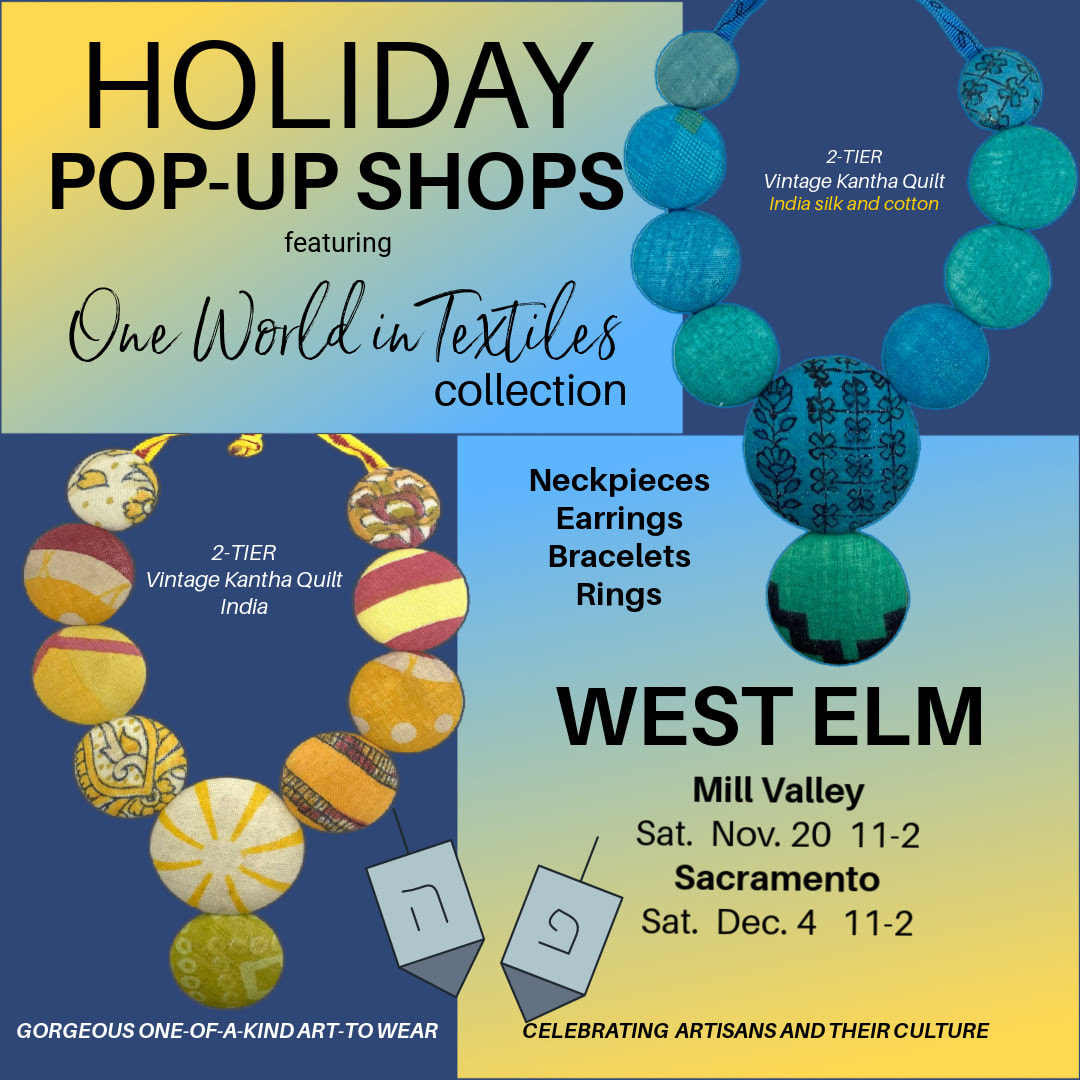- HOME
- ABOUT
- ONE WORLD IN TEXTILES
- LEGACY ART TO WEAR
- PET PENDANTS STORE
- CASA COLLECTION 2019
- BACKPACK & KEY RING ORNAMENTS
- HOLIDAY BAZAAR 2017
- SUMMER 2017
- ART-TO-WEAR Earwear 2015
- SPARKLE PLENTY ears
- VINTAGE JAPANESE Brooches
- HAWAIIAN BEAUTY 2008
- T-SHIRTS 2008
- TOTE BAGs
- NEW: ORIGINAL POSTCARDS
- GARDENS & PATIOS
- CONTACT US
|
"DESIGN WITH THE PLANET IN MIND"
One World in Textiles collection speaks to the universal appeal of woven, printed, and hand dyed fabric. This presentation of wearable artifacts honors world-wide textile makers, their culture, dedication and skill. The creation of one-of-a-kind wearable art is an act of love. * WE ARE PLEASED TO HAVE BEEN CHOSEN BY THE ASIAN ART MUSEUM, S.F., THE FOWLER MUSEUM at UCLA, and VISIONS ART MUSEUM FOR THEIR SHOPS CATALOG OF INVENTORY: Instagram: @arthouse.maui CONTACT EMAIL: [email protected] - (We Love Doing Trunk Shows and Pop-up Shops) |
|
One World in Textiles collection Begin your journey around the world with hand- loomed cotton from
|
- OAXACA, MEXICO Hand-loomed cotton Three weaving cultures are still alive in Oaxaca: The Zapotec, Mixtec, and Nahua.
One World in Textiles wearable artifact collection uses contemporary woven textile remnants from ateliers making clothing, home accessories, etc. Woven on flying shuttle looms and sometimes on centuries old traditional back strap looms. You can hear the rhythmic pounding of the beaters in the streets of Xochimilco Barrio in Oaxaca City.
VINTAGE GUATEMALA Hand Loomed Cotton Guatemalan weaving began over 1,500 years ago with the ancient Maya civilization. Woven textiles were not just practical, they were symbolic and demonstrated wealth and status. It is said that Guatemalan women speak through the strong colors they put into their weaving. Villages maintained their identity through their own designs and colors. That tradition is changing with advancing Westernization.
Many of the cotton textiles in the Collection have been dyed with natural dyes, including indigo/añil. Ikat/Tie-dye technique called jaspé is masterfully used to create age-old patterns. Most of the fabrics were woven on back strap or flying shuttle looms. All embroidery is done by hand. *Textiles for this collection were gathered in the 1970's and 80's.
We are proudly presenting both strongly colord and subtle examples of vintage Guatemalan fabrics in our One World in Textiles collection.
Many of the cotton textiles in the Collection have been dyed with natural dyes, including indigo/añil. Ikat/Tie-dye technique called jaspé is masterfully used to create age-old patterns. Most of the fabrics were woven on back strap or flying shuttle looms. All embroidery is done by hand. *Textiles for this collection were gathered in the 1970's and 80's.
We are proudly presenting both strongly colord and subtle examples of vintage Guatemalan fabrics in our One World in Textiles collection.
VINTAGE JAPAN Silk, Cotton, Synthetic
From ancient times until the end of the 1800's, only the upper classes (nobles and samurai families) were allowed to wear garments made of silk. Commoners, some of whom were the talented weavers and dyers--the ones who produced the precious fabric--were only allowed to make textiles for their own consumption from collected bast fibers such as hemp, banana, and later cotton. These natural fabrics known as saki ori were often dyed with indigo (aizome) and other plant colorants, or by dipping them mud as a resist. (tsumugi)
By the mid-20th century, cotton was widely milled for work clothes, futon covers, and yukata (informal kimono). Ikat/kasuri patterns, rustic stripes and checks warmed body and bed. We are fortunate to have been able to create several lovely neck pieces from these humble materials, in addition to Mid-century cotton yukata and exquisite antique silk kimono and obi fabrics.
From ancient times until the end of the 1800's, only the upper classes (nobles and samurai families) were allowed to wear garments made of silk. Commoners, some of whom were the talented weavers and dyers--the ones who produced the precious fabric--were only allowed to make textiles for their own consumption from collected bast fibers such as hemp, banana, and later cotton. These natural fabrics known as saki ori were often dyed with indigo (aizome) and other plant colorants, or by dipping them mud as a resist. (tsumugi)
By the mid-20th century, cotton was widely milled for work clothes, futon covers, and yukata (informal kimono). Ikat/kasuri patterns, rustic stripes and checks warmed body and bed. We are fortunate to have been able to create several lovely neck pieces from these humble materials, in addition to Mid-century cotton yukata and exquisite antique silk kimono and obi fabrics.
|
|
 ALOHA SHIRT
ALOHA SHIRT
VINTAGE HAWAII Printed Cotton "Blessed With Aloha" Printed cotton with colorful motifs reflecting the
Tahitian and Polynesian heritage of the Hawaiian Islands came into its own in the 20th century.
Aloha Shirts--once the unassuming garb of workmen--have become the trademark of Hawaii. The name “Aloha Shirt” was registered in 1936.
The weaving houses Daniel Adams Creations Tahiti hand printed textiles, and THC Hawaiian textiles produced exquisite printed designs
in the 1960's and 70's. Far from what may be picture (hybiscus, palm trees, etc.) Designs here subtle, sophisticated.
One World in Textiles collection of vintage Hawaiian textiles offers a rare opportunity to enjoy the color and energy of some of these mid-20th century Hawaiian prints curated into exciting abstract images. We think of our one-of-a-kind neck pieces and earrings as "Vintage/Modern".
Tahitian and Polynesian heritage of the Hawaiian Islands came into its own in the 20th century.
Aloha Shirts--once the unassuming garb of workmen--have become the trademark of Hawaii. The name “Aloha Shirt” was registered in 1936.
The weaving houses Daniel Adams Creations Tahiti hand printed textiles, and THC Hawaiian textiles produced exquisite printed designs
in the 1960's and 70's. Far from what may be picture (hybiscus, palm trees, etc.) Designs here subtle, sophisticated.
One World in Textiles collection of vintage Hawaiian textiles offers a rare opportunity to enjoy the color and energy of some of these mid-20th century Hawaiian prints curated into exciting abstract images. We think of our one-of-a-kind neck pieces and earrings as "Vintage/Modern".
NORTH AMERICA, MID-CENTURY Barkcloth Before the development of woven textiles, bark cloth was produced in South East Asia and the Pacific Islands by soaking and beating the inner bark of certain trees into a paper-like fabric that was used for apparel.
Modern barkcloth is a soft, thick, slightly textured woven fabric. It is definitely softer than the original! Now it is associated with the mid-century home fashion where it was used for curtains, drapery, upholstery, and slipcovers. Barkcloth was often printed with tropical, abstract, "atomic" and "boomerang" motifs (these latter from the 1950's), and was sometimes shot through with gold Lurex threads (“Las Vegas cloth”)
One World in Textiles presents you with the opportunity to wear abstracted designs of vintage bark cloth and flat woven cotton and silk as personal adornment and a unique fashion statement.
Modern barkcloth is a soft, thick, slightly textured woven fabric. It is definitely softer than the original! Now it is associated with the mid-century home fashion where it was used for curtains, drapery, upholstery, and slipcovers. Barkcloth was often printed with tropical, abstract, "atomic" and "boomerang" motifs (these latter from the 1950's), and was sometimes shot through with gold Lurex threads (“Las Vegas cloth”)
One World in Textiles presents you with the opportunity to wear abstracted designs of vintage bark cloth and flat woven cotton and silk as personal adornment and a unique fashion statement.
|
|
|
|
1930'-1950's AMERICA FeedSack Cotton At the end of the 1800´s, unbleached cotton bags replaced wooden barrels as food containers. Sugar, salt, feed, flour, etc. were packaged in these bags. When poverty in the U.S. became widespread just before, and during, the first great depression, American women activated their creativity. They began adopting the fabric sacks to make clothing and quilting.
Manufacturers saw an opportunity to promote their products through the appearance of the sacks. Around 1925 they hired artists to create colorful patterns to be printed on the plain white sacks. It was a clever marketing ploy. The feed sacks became a hot commodity and were sold or traded widely. The feed sack fabric was still used for clothing after World War II and into the 1950´s, as it was considered patriotic to use them.
Today, these nearly century-old textiles are extremely collectible. They are still being acquired and used to make comforting quilts.
Here, you find authentic feedsack scraps transformed as a colorful statement; a new form--art-to-wear in the One World in Textiles collection.
Manufacturers saw an opportunity to promote their products through the appearance of the sacks. Around 1925 they hired artists to create colorful patterns to be printed on the plain white sacks. It was a clever marketing ploy. The feed sacks became a hot commodity and were sold or traded widely. The feed sack fabric was still used for clothing after World War II and into the 1950´s, as it was considered patriotic to use them.
Today, these nearly century-old textiles are extremely collectible. They are still being acquired and used to make comforting quilts.
Here, you find authentic feedsack scraps transformed as a colorful statement; a new form--art-to-wear in the One World in Textiles collection.
WEST AFRICA (Nigeria, Ghana) "Dutch Wax" printed cotton
The Dutch East India Company began creating textile prints based on designs from Indonesia in the late 1800´s..They used a new roller printing technology to apply a resin resist instead of hot wax. It is a technique that mimics the "crackle effect" look of authentic Indonesian batik, but without its labor-intensive method.
Originally "Dutch Wax" prints were manufactured by the Dutch for the Indonesian textile market extending into Africa. Around 1846, African women requested tribal-like patterns and motifs to be printed on fabric. Colors and patterns have great significance and are prized as gifts for special occasions. High end designers have participated in museum and fashion shows.Cheaper imitations are made in China. But, Interestingly, many of the authentic African designs are produced in the Dutch city of Helmond!
The Dutch East India Company began creating textile prints based on designs from Indonesia in the late 1800´s..They used a new roller printing technology to apply a resin resist instead of hot wax. It is a technique that mimics the "crackle effect" look of authentic Indonesian batik, but without its labor-intensive method.
Originally "Dutch Wax" prints were manufactured by the Dutch for the Indonesian textile market extending into Africa. Around 1846, African women requested tribal-like patterns and motifs to be printed on fabric. Colors and patterns have great significance and are prized as gifts for special occasions. High end designers have participated in museum and fashion shows.Cheaper imitations are made in China. But, Interestingly, many of the authentic African designs are produced in the Dutch city of Helmond!
|
|
INDIA Hand Woven and Printed Vintage Sarees
Indian wood block printing using complex designs carved into wood and the application of exquisite color is thought to be at least 2,000 years old.
A designated caste of craftsmen apply dyes created with natural materials and use resist techniques that are handed down from generation to generation. Millions of miles of super fine handwoven cotton for sarees (saris) have been printed in this fashion
In West Bengal, practical homemakers were the first to transform old, used sarees into beautiful Kantha quilts by layering remnants (they did not use batting) and binding them together with a simple running stitch. We deconstructed Vintage Kantha quilts remnants, then chose specific printed areas to combine as the elements in neckpieces creating exquisite wearable artifacts.
Indian wood block printing using complex designs carved into wood and the application of exquisite color is thought to be at least 2,000 years old.
A designated caste of craftsmen apply dyes created with natural materials and use resist techniques that are handed down from generation to generation. Millions of miles of super fine handwoven cotton for sarees (saris) have been printed in this fashion
In West Bengal, practical homemakers were the first to transform old, used sarees into beautiful Kantha quilts by layering remnants (they did not use batting) and binding them together with a simple running stitch. We deconstructed Vintage Kantha quilts remnants, then chose specific printed areas to combine as the elements in neckpieces creating exquisite wearable artifacts.
|
|
